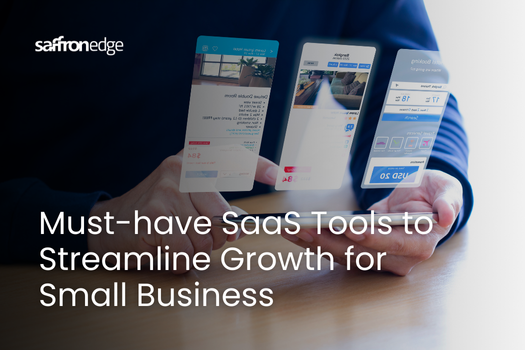Contents
- What is a Go-To-Market Strategy?
- What is the Difference Between a General Marketing Strategy & Go-To-Market Strategy?
- Why Does a Go-To-Market Strategy Matter in 2026?
- What are the Types of GTM Strategies?
- What are the Benefits of a Go-To-Market Strategy?
- What are the Essential Elements of a Go-To-Market Strategy?
- What Does a Template of GTM Strategy Include?
- Launch Your Product with a Proven Go-To-Market Strategy
- What are Some Examples of GTM Strategy?
- How to Build a Successful Go-To-Market Strategy?
- Conclusion
- Accelerate Success with a Winning Go-To-Market Strategy
Starting a new product or service or jumping into a fresh market isn't just about coming up with a brilliant idea; it's about carrying it out perfectly, step by step.
That's where the Go-To-Market Strategy steps in: it's like a clear map that helps turn your creative spark into actual cash flow.
Whether you're a young startup trying to grow fast or a big company shifting gears to explore new places, a strong GTM plan is what separates a total bust from an epic win.
With 2026 nearby, intelligent AI tech customizing everything just for you, plus the need to sell through all kinds of channels simultaneously (like apps, stores, websites, and social media), is changing the game.
That makes getting your GTM strategy right more important than ever.
In this guide, we'll explain what it is, why it matters, how to build one, real examples, and tips for thriving in 2026. Let's dive in.
What is a Go-To-Market Strategy?
A Go-To-Market Strategy is a detailed plan of action that maps out how a company will successfully launch a product, service, or expansion into a new market.
It syncs up cross-functional teams, like sales funnels, inbound marketing, product-market fit tweaks, and customer success ops to deliver your value proposition to the right audience through the optimal channels, pricing, and messaging.
It launches with deep-dive market segmentation to identify your target audience (think demographics, psychographics, and pain points), select appropriate sales and marketing distribution channels, and nail pricing strategies.
The primary goal is to ensure the product resonates with the intended audience and achieves desired business outcomes.
Think of it as a bridge connecting your internal strengths to external opportunities.
As one expert puts it, “A go-to-market strategy is the bridge connecting a great product or service to its potential market success.
It's the blueprint that ensures that a company's offering not only reaches its intended audience but also resonates with them, addressing their needs and challenges.”
What is the Difference Between a General Marketing Strategy & Go-To-Market Strategy?
While both GTM and general marketing strategies aim to promote a product, they differ in scope and focus:
General Marketing Strategy: This is an ongoing, high-level plan focused on brand building, customer retention, and long-term growth.
It includes elements like content marketing, SEO, and social media campaigns that nurture leads over the years. It's evergreen and supports the entire business ecosystem.
Go-To-Market Strategy: Product-specific and time-bound, GTM kicks in at launch or expansion phases. It zeroes in on initial customer acquisition, competitive positioning, and quick wins.
For example, a general strategy might build brand awareness via podcasts, while a GTM could involve targeted LinkedIn ads for a new go-to-market services suite.
| Aspect | General Marketing Strategy | Go-To-Market Strategy |
|---|---|---|
| Focus | Brand awareness and retention | Product launch and initial sales |
| Timeline | Long-term (ongoing) | Short-term (launch-specific) |
| Scope | Company-wide | Product or market segment-specific |
| Metrics | Engagement, loyalty (e.g., NPS) | Revenue ramp-up, acquisition cost (CAC) |
| Teams Involved | Marketing, PR | Cross-functional (sales, product, support) |
A GTM strategy is a subset of the overarching marketing strategy, zooming in on the specifics of a product launch.
Why Does a Go-To-Market Strategy Matter in 2026?
In a world where 75% of new products fail (per Harvard Business Review), a GTM strategy is crucial for:
-
Market Clarity: Provides a clear understanding of the target audience and their needs.
-
Resource Optimization: Ensures efficient allocation of marketing and sales resources.
-
Competitive Advantage: Helps differentiate the product from competitors.
-
Revenue Growth: Drives sales by aligning product offerings with market demand.
Without a GTM strategy, businesses risk misaligning their product with market needs, leading to poor adoption and wasted resources.
What are the Types of GTM Strategies?
Depending on the product, market, and business objectives, companies can adopt various GTM strategies:
1. Inbound GTM: Focuses on attracting customers through content marketing, SEO, and social media.
2. Outbound GTM: Involves direct outreach like cold calling, email campaigns, and events.
3. Product-Led GTM: The product itself drives user acquisition, often through freemium models or trials.
4. Sales-Led GTM: Relies heavily on a dedicated sales team to close deals.
5. Account-Based GTM: Targets specific high-value accounts with personalized marketing and sales efforts.
6. Channel-Led GTM: Utilizes third-party partners or resellers to distribute the product.
7. Community-Led GTM: Builds a community around the product to drive adoption and advocacy.
8. Marketing-Led GTM: Content and ads build hype, suited for consumer goods (e.g., Apple's iPhone launches).
9. Hybrid GTM: Combines elements, increasingly popular with go-to-market services blending inbound marketing and outbound sales.
10. Partner-Led GTM: Leverages ecosystems like app stores or resellers, common in SaaS.
Each strategy has its merits and should be chosen based on the product's nature and the target market's characteristics.
What are the Benefits of a Go-To-Market Strategy?
Implementing a clear GTM strategy can:
-
Accelerate Time-to-Market: Streamlines processes, reducing delays.
-
Enhance Customer Experience: Ensures the product meets customer expectations.
-
Improve Cross-Department Collaboration: Aligns marketing, sales, and product teams.
-
Increase Market Penetration: Facilitates broader and deeper market reach.
Ultimately, a GTM strategy serves as a blueprint for successful product introductions and sustained growth.
What are the Essential Elements of a Go-To-Market Strategy?
A robust GTM strategy typically includes:
-
Market Research: Understanding market trends, customer needs, and competitive landscape.
-
Target Audience: Creating detailed buyer personas.
-
Value Proposition: Clearly articulating the product's unique benefits.
-
Pricing Strategy: Determining the optimal price point.
-
Sales and Marketing Plan: Outlining promotional tactics and sales processes.
-
Metrics and KPIs: Setting benchmarks to measure success.

These components ensure that all aspects of the product launch are aligned and executed effectively.
What Does a Template of GTM Strategy Include?

A standard GTM template is a customizable framework:
-
Executive Summary: Provides an overview of the GTM strategy, including key goals and objectives for the launch.
-
Market Analysis: Analyzes market size, current trends, and competitors using tools like SEMrush to identify opportunities.
-
Customer Journey Map: Maps key touchpoints from awareness to purchase, showing how customers interact with your brand.
-
Messaging Framework: Defines core messages, slogans, and content pillars to communicate your value proposition consistently.
-
Action Plan: Lists tasks, assigns owners, and sets deadlines to ensure coordinated execution.
-
Budget Breakdown: Details the allocation of resources for ads, events, and other marketing activities.
-
Success Metrics: Establishes dashboards and KPIs to track performance and measure outcomes.
Launch Your Product with a Proven Go-To-Market Strategy
Saffron Edge helps you design a go-to-market strategy that maximizes adoption, accelerates revenue, and ensures your product reaches the right audience from day one.
What are Some Examples of GTM Strategy?
Each company tailors its GTM approach based on its product, audience, and business objectives, showing that there’s no one-size-fits-all solution.
Let’s look at a few notable examples of companies that executed their GTM strategies successfully.
Slack: A Product-Led Growth Strategy That Sparked Viral Adoption
When Slack launched, it was entering a crowded market of team communication tools. But they took a bold approach by adopting a product-led growth (PLG) strategy, putting the product experience at the forefront of the customer journey.
The key to this strategy was their freemium model, which allowed users to start using the product with no financial commitment.
The brilliance of this approach lies in how Slack designed its user experience. By offering a valuable, no-cost entry point.
Slack was able to encourage viral adoption, and users could easily invite teammates to join their workspace, creating a network effect that accelerated growth.
As users experienced the ease and utility of the tool, they became its advocates, driving more sign-ups.
The product became so integral to team workflows that it spread organically within companies, from small startups to large enterprises.
The more people used Slack, the more indispensable it became, creating a self-sustaining growth loop.

Today, Slack is one of the most recognized brands in the communication space, with millions of active users worldwide.
Dropbox: Leveraging Referral Programs to Drive Inbound Growth
Dropbox transformed the file-sharing and cloud storage industry with a clever inbound GTM strategy focused on referral programs.
Early on, Dropbox understood that adoption would be key to success, and their referral program made it incredibly easy for users to invite others to join the platform.
The beauty of Dropbox’s referral system was its simplicity: for every friend a user invited who signed up for Dropbox, both the referrer and the new user would receive extra storage space.
This win-win incentive created massive buzz, driving exponential growth in their user base. The strategy wasn’t just about enticing users to sign up; it was about creating a snowball effect.
As users shared Dropbox with their network, the product reached new audiences organically, and word-of-mouth played a major role in their success.

By focusing on ease of use, simplicity, and a compelling reward system, Dropbox quickly went from a niche product to a household name, fundamentally changing how people think about cloud storage.
Salesforce: Personalizing the Sales Process with an Account-Based Strategy
When Salesforce set out to dominate the CRM space, it faced a tough challenge: large enterprise clients were often hesitant to adopt new technologies.
To solve this problem, Salesforce pivoted to an account-based GTM strategy, focusing on personalized outreach to key enterprise accounts rather than broad, generalized marketing efforts.
Salesforce’s sales team used detailed research and insights to create tailored solutions for each enterprise client, understanding their unique pain points and needs.
Instead of a one-size-fits-all pitch, Salesforce’s approach was highly customized, showing each company how Salesforce could improve its workflow, streamline sales, and drive revenue growth.
This personalized approach helped Salesforce build deep relationships with key decision-makers, eventually leading to their widespread adoption by global corporations.
Their ability to speak directly to the specific needs of each client made them a trusted partner in enterprise solutions.

By aligning the product with the needs of large-scale businesses, Salesforce positioned itself as a leader in CRM and helped redefine the industry.
How to Build a Successful Go-To-Market Strategy?
A strong Go-To-Market strategy goes beyond just launching a product; it ensures that your offering resonates with your audience, reaches them effectively, and delivers measurable business results.
Here’s a step-by-step approach to crafting a GTM plan that works:
Conduct Market Research
Begin by thoroughly understanding the market landscape. Analyze trends, customer behaviors, and competitor strategies.
Identify market gaps, potential challenges, and opportunities for differentiation. Research should include:
-
Market size and growth potential
-
Key competitors and their positioning
-
Customer pain points and unmet needs
-
Regulatory or industry-specific considerations
| Aspect | Details |
|---|---|
| Persona | Remote team managers, HR leaders, and operations heads in growing organizations. |
| Pain Points | • Difficulty managing distributed teams • Struggles to attract skilled talent • Current communication tools slow down workflow |
| Product Value | • Enables employees to collaborate from any location • Automates post-call tasks, boosting team efficiency |
| Key Message | Simplify team collaboration and empower talent worldwide with our cloud-based communication platform. |
| Decision-Maker | Chief Operating Officer (COO), HR Director, or Head of Remote Operations. |
This foundation ensures your GTM strategy is grounded in real-world insights rather than assumptions.
Define Your Target Audience
Segment your market and create detailed buyer personas. Consider demographics, psychographics, and behavioral patterns. Ask:
-
Who will benefit most from the product?
-
What motivates their purchase decisions?
-
Where do they spend time online or offline?

Mapping the customer journey is crucial. Understand the stages your audience goes through from awareness to purchase and beyond.
This ensures your messaging and campaigns align with their needs at every touchpoint.
Develop a Compelling Value Proposition
Your value proposition is the core of your messaging. It clearly communicates why your product is unique and why customers should care. Ensure your messaging addresses:
-
The problem your product solves
-
The benefits and outcomes for the customer
-
How it stands out from competitors
Consistent, clear messaging across marketing channels helps build trust and accelerate adoption.
Select Sales and Marketing Channels Strategically
Not all channels are created equal. Choose the channels that best reach your target audience and align with their journey. This may include:
-
Digital channels: social media, email marketing, SEO, content marketing
-
Direct sales: field sales, account-based strategies, cold outreach
-
Partnerships: resellers, affiliates, or influencers
Strategize how each channel will contribute to awareness, engagement, and conversion. Consider multi-channel approaches to maximize reach and impact.
Set Pricing and Positioning
Determine a pricing model that reflects your value proposition and aligns with market expectations.
Positioning should clearly communicate your product’s market position, highlighting its differentiation and benefits.
Use competitive benchmarking, value-based pricing, and customer feedback to inform your decisions.
Align Internal Teams
A GTM strategy requires collaboration across marketing, sales, product, and customer support teams. Ensure everyone is aligned on:
-
Goals and KPIs
-
Messaging and positioning
-
Sales enablement materials
-
Customer journey mapping
Cross-functional alignment ensures a seamless experience for your customers and prevents mixed messages.
Monitor, Optimize, and Iterate
Finally, a GTM strategy is not static; it must evolve with the market and feedback. Track key performance metrics such as:
-
Lead generation and conversion rates
-
Customer acquisition cost (CAC)
-
Engagement across channels
-
Revenue growth and retention
Use insights to refine messaging, adjust tactics, and optimize your channels. Continuous iteration ensures your strategy remains effective and drives sustained growth.
Conclusion
In this blog, we explored what a Go-To-Market (GTM) strategy is, how it differs from a general marketing strategy, its importance, types, benefits, essential elements, and even provided examples from Slack, Dropbox, and Salesforce.
We also outlined actionable steps to build a successful GTM plan, from market research and audience definition to messaging, channel selection, and optimization.
A well-defined Go-To-Market strategy ensures your product reaches the right audience, delivers value, and drives sustainable growth.
By aligning every step of the launch process, businesses can minimize risks, maximize adoption, and achieve long-term market success.
Accelerate Success with a Winning Go-To-Market Strategy
Don’t leave your launch to chance. Leverage Saffron Edge’s go-to-market strategy expertise to optimize messaging, channels, and positioning for faster growth and measurable results.
Frequently Asked Questions
What is the purpose of a Go-To-Market strategy?
A Go-To-Market strategy serves as a blueprint for introducing a product or service to the market, focusing on reaching the right audience with the right message at the right time. It helps businesses streamline their processes, ensure market-fit, and drive customer adoption effectively.
How can a Go-To-Market strategy help with customer acquisition?
A Go-To-Market strategy focuses on optimizing the customer acquisition process by targeting specific buyer personas, selecting the most effective sales and marketing channels, and refining messaging. This targeted approach reduces wasted efforts and drives higher conversion rates.
What are some common mistakes businesses make in their Go-To-Market strategy?
Some common mistakes in the Go-To-Market strategy include insufficient market research, unclear value propositions, and misalignment between marketing, sales, and product teams. These issues can lead to poor customer engagement, slow adoption, and wasted resources.
How often should a Go-To-Market strategy be updated?
A Go-To-Market strategy should be reviewed and updated regularly, ideally at least once a year, or whenever major changes occur in the market or your business. Regular optimization ensures that the strategy remains relevant and effective as market conditions and customer needs evolve.
Can a Go-To-Market strategy be used for both new products and existing product expansions?
Yes, a Go-To-Market strategy is essential not only for new product launches but also for product expansions, entering new markets, or targeting new customer segments. It helps businesses refine their approach to meet the unique needs of each scenario, ensuring a successful entry and sustained growth.
Related Blogs
We explore and publish the latest & most underrated content before it becomes a trend.
5 min read
How is Voice Search revolutionizing SEO once and for all?
By Vibhu Satpaul
Subscribe to Saffron Edge Newsletter!











